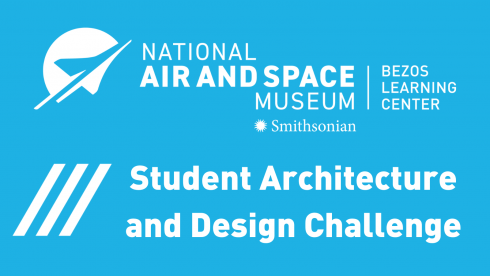The Smithsonian’s National Air and Space Museum has announced its Student Architecture and Design Challenge for the design of an element for its new Bezos Learning Center.
Through this challenge, teams of architecture and design students and early-career architects will be challenged to design an architectural element for the exterior structure that visualizes and communicates scientific aviation, astronomy or aerospace concepts in an effective way. The pre-phase of the challenge launched on Dec. 7, with an eligibility quiz for interested teams to determine their suitability for the challenge.
This is a team challenge, and all entries must be composed of teams of two or three people. Teams can consist of a mixture of design and/or architecture students, recent graduates and professionals with experience of five years or less.
After completing the eligibility quiz, teams can apply to Phase One of the challenge. The Phase One application window opens Jan. 3, 2023, and closes April 18, 2023. Selected teams will then be invited to participate in Phase 2, the final stage of the challenge, a 60-day design sprint that will take place May 16, 2023, to Aug. 9, 2023.
Each member of the winning team will receive a one-to-three-year paid position with the National Air and Space Museum and will serve as members on the Bezos Learning Center building project team.
For more information about the challenge, including general rules and requirements, visit the museum’s website.
The Bezos Learning Center is part of the $200 million donation the Smithsonian received from Jeff Bezos, founder and executive chair of Amazon and founder of aerospace and space flight company Blue Origin. The donation is the largest gift to the Smithsonian since the Institution’s founding gift from James Smithson in 1846.
The Bezos Learning Center will be constructed on the east side of the museum’s plaza at its flagship location on the National Mall. The center will connect to all Smithsonian museums, with a focus on under-resourced communities. It will feature programs and activities that inspire students to pursue innovation and explore careers in STEAM (science, technology, engineering, arts and mathematics) fields, and it will help teachers better utilize the Smithsonian’s collections.


